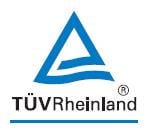The U.S. Toy Standard ASTM F963-16 was recently updated after a five-year review and revision. This is a significant revision to the ASTM F963-11, bringing a closer alignment with other international standards including ISO 8124 and EN 71. The U.S. Consumer Product Safety Commission has 90 days to review and approve the new standard. After approval by CPSC, the revised standard will be effective 90 days later, and will replace ASTM F963-11 as the new mandatory regulation in CPSIA 2. ASTM has formally notified the CPSC on 1 November 2016 that the revision to ASTM F963-16 was published. The estimated timing for the standard to become the mandatory is April 29, 2017. Download the Quick Guide to Updates: U.S. Toy Standard - ASTM F963-16.
In this blog, we would like to highlight the addition of HD XRF as an alternative for homogenous plastic (polymeric) materials.
What is HD XRF?
The high-definition x-ray fluorescence (HDXRF) technology can be used to measure lead and other regulated elements at much lower levels. HDXRF is capable of detecting levels of lead and other regulated elements in paint and substrates down to single digit parts-per-million in a broad range of materials. This level of sensitivity and accuracy is accomplished without the product destruction required by traditional “wet chemistry” methods that are also more costly and time-consuming to operate. Read about "TUV Rheinland to Deploy XOS' HDXRF Analyzer for Consumer Product Testing in Bentonville, ARK and Hong Kong Labs."
Check out some pictures of our HD XRF testing:

What are a couple of advantages the HD XRF Technology has given the laboratory from an analytical quality perspective?
The ability to perform a fast and reliable test directly on the material with minimal manipulation of the sample is always beneficial. We can typically observe the relative accuracy of the value after one scan and can always run confirmations if necessary by other traditional methods.
Having an alternate testing technology is also something that provides a higher level of confidence in the final reported results for the laboratory and the client. So, when an HD XRF value matches closely to those from ICP analysis, this helps eliminate potential bias or error in either of the methods.
How does HD XRF best benefit the client?
It eliminates significant cost in terms of the amount of testing that is required. Whether it is screening for the ASTM heavy metals, analyzing for lead content, or eliminating the potential presence of certain flame retardants, there is reduced time, effort and resources that result in the application of this method of analysis. Often, it can also reduce the number of materials that need to be submitted for testing.
Download our Guide to HD XRF to learn more.
Did you know?
TUV Rheinland is proud to offer our HD XRF testing evaluation services.- TUV Rheinland’s Bentonville location is one of 36 labs in the United States that have an HD XRF instrument.
- We were one of the first domestic labs to begin using the HD Prime back in 2011.
- The Bentonville lab performs over 10,000 XRF scans each year for evaluation of products for US and EU regulatory requirements. These include ROHS, REACH, Cal Prop 65, EU Packaging, CPSIA, & ASTM F963.



